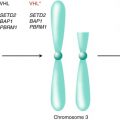Author, year
Treatment
Number of patients
5-year survival
Significant difference
Van der Werf-Messing et al. 1981 [12]
RT + N
89
50 %
No
N
85
Juusela et al. 1977 [11]
RT + N
38
47 %
No
N
50
63 %
The Rotterdam trial [10] compared preoperative radiation therapy followed by nephrectomy to nephrectomy alone. The radiation therapy in this study consisted of a 30 Gy dose in 2 Gy daily fractions delivered to the kidney and regional lymph nodes and was immediately followed by nephrectomy. The study found that preoperative radiation therapy was not associated with any improvement in overall survival or rates of distant metastasis. Local control rates were not reported. The authors did observe that patients with locally advanced (T3) tumors who received preoperative radiotherapy had a lower rate of residual disease after nephrectomy, suggesting that radiation may be successful at making some previously unresectable tumors resectable. However, because resectability was not a primary end point of the study, this conclusion should be taken with some caution. The trial was continued using radiotherapy to 40 Gy, but on subsequent analysis, the higher dose also failed to show any benefit in survival or distant metastasis rate [12].
The Swedish trial [11] was another prospective randomized trial comparing neoadjuvant radiotherapy plus nephrectomy to nephrectomy alone. In this trial, the patients were randomized to receive a preoperative course of 33 Gy delivered in 2.2 Gy fractions followed by nephrectomy or nephrectomy alone. In this study, the patients receiving radiotherapy had a lower 5-year survival, at 47 % vs. 63 % in patients treated with nephrectomy alone, although the difference was not statistically significant.
These trials did have certain limitations. First, the selection of eligible patients may not have been optimal. Both trials included patients of all T stages, including T1 and T2 tumors that are not likely to locally recur after nephrectomy, and neither trials reported local control rates. The only potential benefit to preoperative radiotherapy was a lower rate of residual disease postoperatively, which was not a primary end point of the study. Finally, since RCC is relatively resistant to radiotherapy, doses of 30–40 Gy may not be enough to yield a clinical benefit.
Taken together, these two randomized trials offer evidence that preoperative irradiation does not improve overall survival or diminish rates of distant metastasis in patients with localized RCC and is therefore not indicated in the treatment of the majority of these patients. Preoperative radiotherapy should be considered in patients who have unresectable primary tumors with the goal of making some of these tumors amenable to resection, but this would have to be prospectively validated.
13.3.2 Postoperative Radiotherapy
Early retrospective data [9, 13, 14] suggested that postoperative radiotherapy improved 5- and 10-year overall survival and local control rates. Rafla et al. [15] reported improved survival and local control rates at 5 and 10 years, although no details were given on the radiotherapy itself. However, as with preoperative radiation, the two randomized trials [16, 17] (Table 13.2) failed to demonstrate a survival benefit to postoperative radiation. In addition, the studies reported a high rate of radiation-related complications, further discouraging the use of postoperative radiotherapy.
Table 13.2
Postoperative RT
First author, year | Stages | Tx | Median dose, Gy (range) | Dose per fraction | Number of patients | 5-year OS, % | 5-year LR,% | Severe toxicity from RT | Conclusions | |
|---|---|---|---|---|---|---|---|---|---|---|
Randomized | ||||||||||
Finney, 1973 [16] | All | N + RT | 55 | 2.04 | 52 | 36 | 13 % (7/52) | 20 (10/52) | No LC or OS benefit, unacceptable toxicity | |
N | − | 48 | 47 | 15 % (7/48) | − | |||||
Kjaer et al. 1987 [17] | 2–3 | N + RT | 50 | 2.5 | 32 | 38b | 0 (0/32) | 44 (12/27) | No LC or OS benefit, unacceptable toxicity | |
N | 33 | 62b | 3 (1/33) | − | ||||||
Nonrandomized | ||||||||||
Peeling et al. 1969 [47] | NR | N + RT | NR | NR | 68 | 25 (17/63) | NR | NR | No OS benefit | |
N | − | − | 96 | 52 (50/96) | NR | − | ||||
Rafla, 1970 [15] | All | N + RT | NR | NR | 94 | 56 (46/81) | 7 (7/94) | NR | Significant OS, LC benefit | |
N | − | − | 96 | 37 (35/94) | 25 (24/96) | − | ||||
Steina et al. 1992 [19] | T2-T4, N0M0 | N + RT | 46 (36–50) | 1.8–2.0 | 56 | 50b | 9 % (5/56) | 5 (3/56) | LC benefit in T3 tumors | |
N | − | − | 63 | 40b | 22 % (14/63) | − | ||||
Kaoa et al. 1994 [21] | 3–4 | N + RT | 45 (41.4–63) | 1.8 | 12 | 75b,c | 0 %b | 0 % | LC benefit, no OS benefit | |
N | − | − | 12 | 62b,c | 30 %b | − | ||||
Makarewicza et al. 1998 [20] | T3-T4 | N + RT | 50 | 1.8 | 114 | 38b | 14.1b | 1 (1/114) | LC benefit in T3N0, no OS benefit | |
N | − | 72 | 35b | 20.8b | ||||||
The first study [16] was conducted in Newcastle, UK. Patients were randomized to nephrectomy alone or to nephrectomy followed by radiotherapy, which consisted of 55 Gy in 2.04 Gy daily fractions. The study found no benefit in local recurrence rate in the radiotherapy group and reported inferior overall survival rates in the group receiving radiotherapy.
Another randomized trial, conducted by the Copenhagen Renal Cancer Study group [17], compared patients with stage II or III RCC treated with nephrectomy alone or with nephrectomy followed by radiotherapy. In this study, the radiotherapy consisted of 50 Gy in 2.5 Gy fractions, delivered to the surgical bed, ipsilateral, and contralateral lymph nodes. In that study, the adjuvant radiotherapy group had inferior 5-year survival (38 % vs. 63 %). Postoperative radiotherapy did not reduce local recurrence rates; the authors reported very low local recurrence rates in both the nephrectomy and adjuvant radiotherapy groups (0 % and 1 %, respectively). In addition, they reported significant rates of radiation-related toxicity; 44 % of patients were reported to have significant toxicity to the stomach, duodenum, or liver, and radiation-related toxicity accounted for 19 % of the deaths in the study.
These studies had certain limitations. First, the study population may not have been ideally selected to detect potential benefits from radiotherapy. The Newcastle study included a high percentage of patients with T1 or T2 tumors, which have a local recurrence rate of only 5 % after nephrectomy alone [18]. Adjuvant radiotherapy would not be expected to show a benefit in this group but would expose patients to risks of radiation-related toxicity. Several factors may have influenced the high rates of mortality and morbidity of radiation therapy. The Newcastle figures on overall survival included several patients whose deaths were likely not due to radiation (three patients with heart failure and one who committed suicide). The study was also conducted prior to the use of CT-based planning, which aids in minimizing radiation dose to normal structures, thereby lowering toxicity. The Copenhagen group study did use CT planning, but their use of a 2.5 Gy daily fraction size is higher than the norm at most centers and likely contributed to the significant rates of toxicity in their study.
More recently, there have been several retrospective studies [19–21] (Table 13.2) reevaluating postoperative radiotherapy in patients considered more likely to develop local recurrence, including patients with close surgical margins, residual disease, spillage of tumor, or transection of tumor thrombus during nephrectomy [19]. Stein et al. reviewed patients of all T stages treated with nephrectomy alone or with nephrectomy followed by elective postoperative radiotherapy consisting of a median dose of 46 Gy in 1.8–2.0 Gy daily fractions. The subgroup of patients with T3 tumors had a reduced risk of local recurrence after postoperative nephrectomy (37 % vs. 11 %, p < 0.05). However, there was no associated improvement in overall survival, which suggests that local irradiation did not decrease the risk of metastatic disease in this situation. Five percent of patients, all treated without CT planning, had significant small bowel toxicity [19].
Kao et al. [21] reviewed 12 patients with T3N0 disease who received postoperative radiotherapy using a median dose of 46 Gy in 1.8 Gy daily fractions. They compared this group to 12 consecutive patients treated with radical nephrectomy alone. Of note, 50 % of the patients receiving postoperative radiotherapy had positive margins versus none in the comparison group. Despite this risk factor, the group receiving radiotherapy had a significantly lower rate of local recurrence (0 % vs. 30 %, p < 0.01). The disease-free survival rate did not reach statistical significance. Gez et al. [22] also found that patients with T3 tumors had a statistically significant lower local recurrence rate (10 % vs. 37 %) after postoperative radiotherapy of 46 Gy in 1.8–2.0 Gy fractions, again with no impact on survival. Noting that the major cause of mortality was systemic relapse rather than local recurrence, the authors concluded that postoperative radiotherapy is not indicated in RCC [22]. Another retrospective study found postoperative radiation therapy reduced local recurrence rates in T3N0 tumors from 15.8 to 8.8 % (p = 0.02) [20]. Finally, Tunio et al. [23] conducted a meta-analysis of seven studies including the ones mentioned above and found that postoperative radiotherapy reduced locoregional failure (p < 0.0001) but did not affect overall or disease-free survival.
Stay updated, free articles. Join our Telegram channel

Full access? Get Clinical Tree







